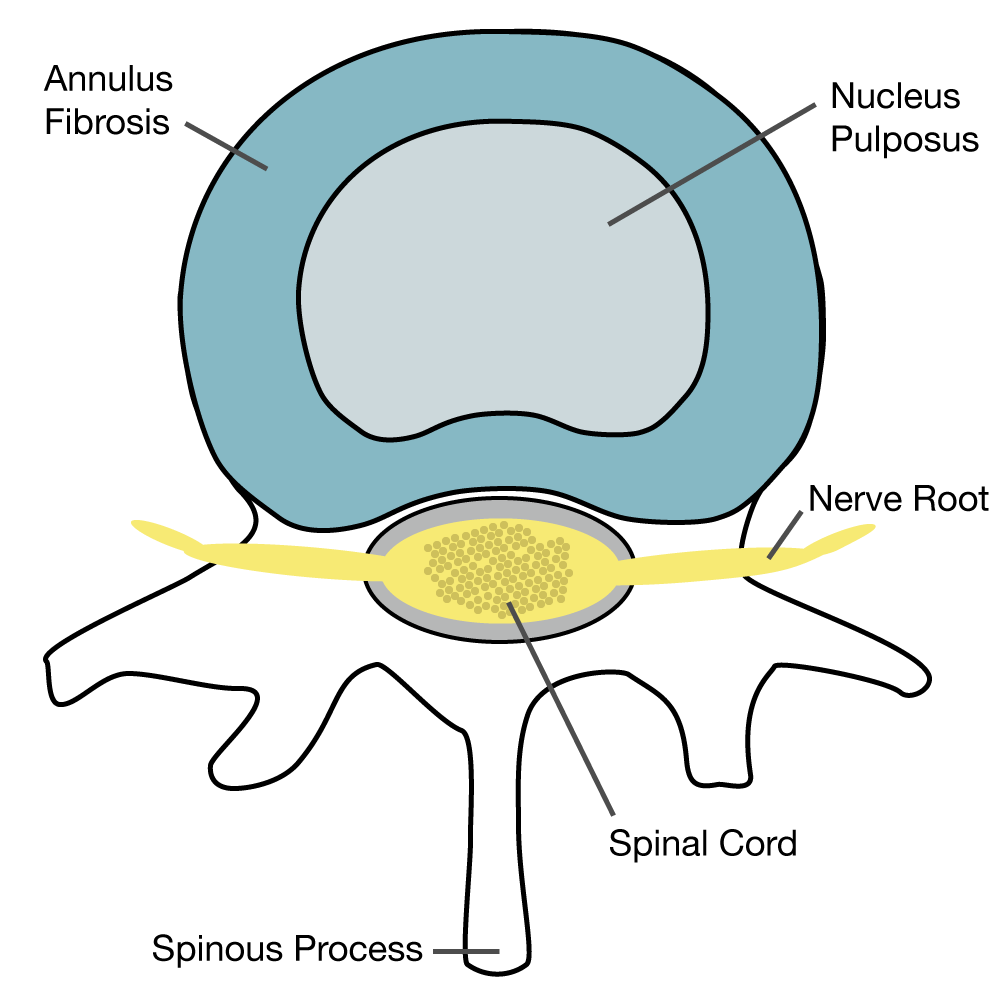
What is a Disc?
By Greg Jones
21/08/2019
What is an intervertebral Disc?
An intervertebral disc sits in between your vertebral bodies and act as a fibrocartilaginous shock absorber which protects the vertebrae, nerves and brain. The inner structure of the disc is called the nucleus pulposus and contains a hydrated gel-like matter that resists compression (it is almost like a gummy bear). The outside structure of the disc is called the annulus fibrosis and is a very strong structure with collagen fibres going in various angles, similar to a radial car tyre.

The entire disc is made up of mainly of water, collagen and proteoglycans and the inner nucleus pulposus has the greatest water content. The amount of water in the nucleus varies during the day depending on activity.

Did you know you are actually slightly taller in the morning compared to the evening due to the discs rehydrating whilst you are sleeping?
Now, most of us have heard about disc bulges, slipped discs or disc herniations? Let’s forget the common used ‘slipped disc’ term as it never slips anywhere. A disc can compress or bulge out usually posteriorly (towards the back) and press on an exiting nerve root as it comes off the spinal cord. This is usually due to an overloading of that specific level, either from other areas being too stiff or surrounding muscles being weak and/or tight.
Disc degeneration is actually a normal ageing process. A study by Brinkjikji et al (2014) showed that 80% of asymptomatic people had disc degeneration when aged 50 years old.
So what happens when you get acute back pain? In most cases when you have an acute episode, you think your life is ending. Your pain is severe and sometimes you can barely move.
First and foremost it is important to get a correct diagnosis. At Physical Edge Healthcare we will perform a full assessment to determine the cause of your pain and explain in detail what is going on and expected timeframes of recovery. If you are getting severe pain, speak to your GP regarding anti inflammatory medications. Don’t stay completely bed ridden as this can make you feel stiffer. Try to avoid irritating factors. Forward bending and sitting (especially in low chairs) will aggravate your symptoms. Try to perform gentle exercises to ease your muscle spasms such as gently rolling knees from side to side and pulling one knee to your chest when lying on your back.
Remember prevention is better than a cure. Regular stretches and light activity to focus on your stiff areas can really help to avoid those sticky situations in the future.
For more information regarding an individualised home program to prevent you from ‘having another episode’, make an appointment at Physical Edge Healthcare to take control of your own body.
 Instagram
Instagram Social | News
Social | News




